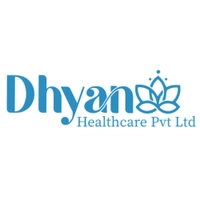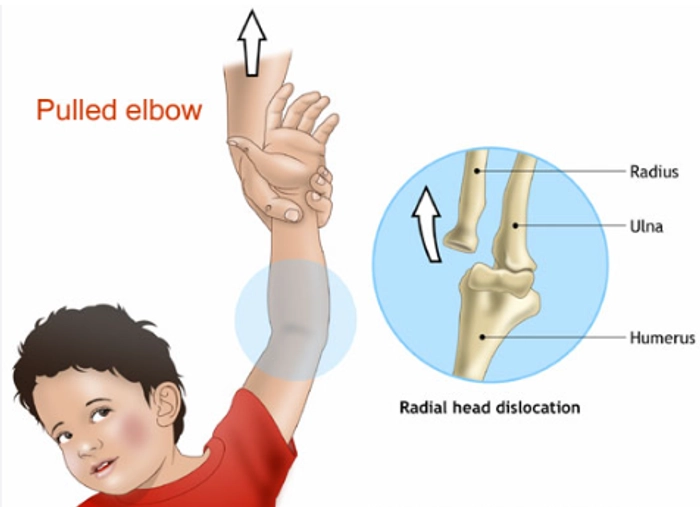Introduction
Pulled elbow, also known as nursemaid's elbow or radial head subluxation, is a common injury in young children. It occurs when the ligament supporting the radius bone in the elbow becomes partially dislodged, causing pain and limited mobility. At Dhyan Healthcare, we understand the importance of prompt diagnosis and appropriate treatment for pulled elbow to ensure a swift recovery and prevent further complications.
What is Pulled Elbow?
Pulled elbow typically occurs in children under the age of 5 and is often the result of a sudden pulling or jerking motion on the child's arm, such as when swinging a child by the hands or pulling on their arm. This causes the radius bone in the elbow to slip out of its normal position, resulting in pain and discomfort.
Causes and Risk Factors
Pulled elbow is most commonly caused by traction or pulling on the child's arm, such as when lifting or swinging them by the hands. Factors that increase the risk of pulled elbow include:
- Young Age: Children under the age of 5 are more susceptible due to the laxity of their ligaments.
- Trauma: Sudden pulling or jerking motions on the child's arm can lead to pulled elbow.
- Repeated Injuries: Children who have experienced pulled elbow before may be at higher risk of recurrence.
Symptoms
The symptoms of pulled elbow typically include:
- Pain: The child may experience pain or discomfort in the affected arm, particularly around the elbow joint.
- Limited Mobility: The child may be hesitant to move or use the affected arm due to pain and stiffness.
- Refusal to Use Arm: The child may hold the affected arm close to their body and avoid using it altogether.
- Crying or Irritability: Young children may cry or become irritable due to pain and discomfort.
Diagnosis
Diagnosing pulled elbow involves:
- Medical History and Physical Examination: Your healthcare provider will review the child's symptoms and medical history, and perform a physical examination to assess the affected arm.
- Clinical Maneuvers: Certain maneuvers, such as the supination-flexion technique or the hyperpronation technique, may be performed to confirm the diagnosis.
- Imaging Studies: X-rays are usually not necessary for diagnosing pulled elbow but may be ordered to rule out other potential injuries or fractures.
Treatment Options
The treatment for pulled elbow typically involves a simple maneuver to relocate the displaced radius bone back into its normal position. This is usually done in the following manner:
-
Reduction Maneuver:
- The supination-flexion technique or hyperpronation technique is performed by a healthcare provider to gently manipulate the affected arm and relocate the radius bone into its normal position.
- This maneuver is usually quick and painless and provides immediate relief from symptoms.
-
Rest and Observation:
- After the reduction maneuver, the child is usually advised to rest the affected arm and avoid activities that may strain the elbow joint.
- Observation for any signs of recurrence or complications is important in the days following the reduction.
-
Follow-up Care:
- A follow-up appointment may be scheduled to ensure the child's elbow is healing properly and to address any concerns or questions.
Post-treatment Care and Prevention
Effective post-treatment care and prevention strategies for pulled elbow include:
- Education: Educate caregivers about the risk factors and proper handling techniques to prevent future occurrences.
- Avoiding Trauma: Avoid lifting or pulling on the child's arms, and encourage safe play practices.
- Early Intervention: Seek prompt medical attention if the child experiences any signs or symptoms of pulled elbow to prevent prolonged discomfort or complications.
Prescription for Managing Pulled Elbow
To effectively manage pulled elbow and promote recovery, we recommend the following prescription:
- Prompt Medical Attention: Seek prompt medical attention if the child experiences any signs or symptoms of pulled elbow for timely diagnosis and treatment.
- Gentle Handling: Handle the child's arms with care and avoid sudden pulling or jerking motions to prevent injury.
- Follow-up Care: Attend follow-up appointments as scheduled to monitor progress and ensure proper healing.
- Education: Educate caregivers about the risk factors and proper handling techniques to prevent future occurrences.
Conclusion
Pulled elbow is a common injury in young children that can cause pain and discomfort but can be easily treated with prompt medical attention. At Dhyan Healthcare, we are committed to providing expert care and support for children with pulled elbow, ensuring a swift recovery and prevention of future occurrences.
For more information or to schedule a consultation, please visit our website or contact our clinic. Our team of experienced healthcare professionals is here to help you effectively manage pulled elbow and ensure the well-being of your child.


